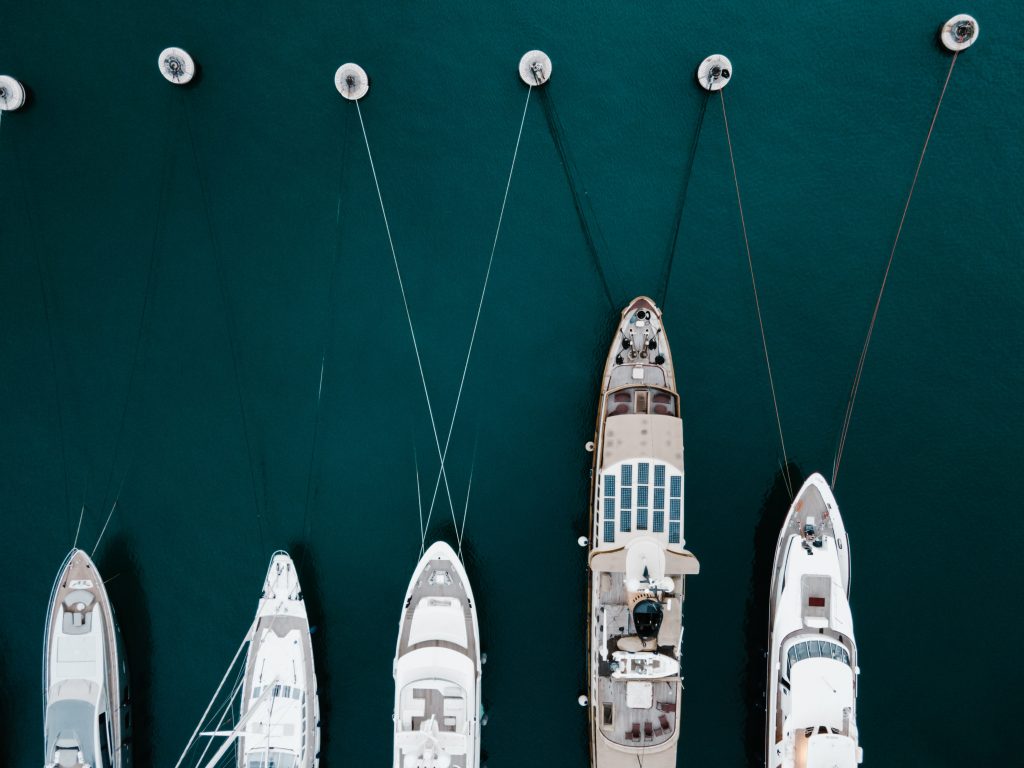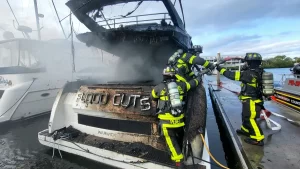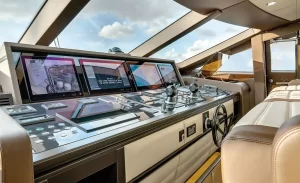This question should be asked by all yacht owners, not only for their safety but, for all sea-going vessels and the environment.
Well-prepared boats have dealt with half the battle when it comes to emergencies and challenges at sea.
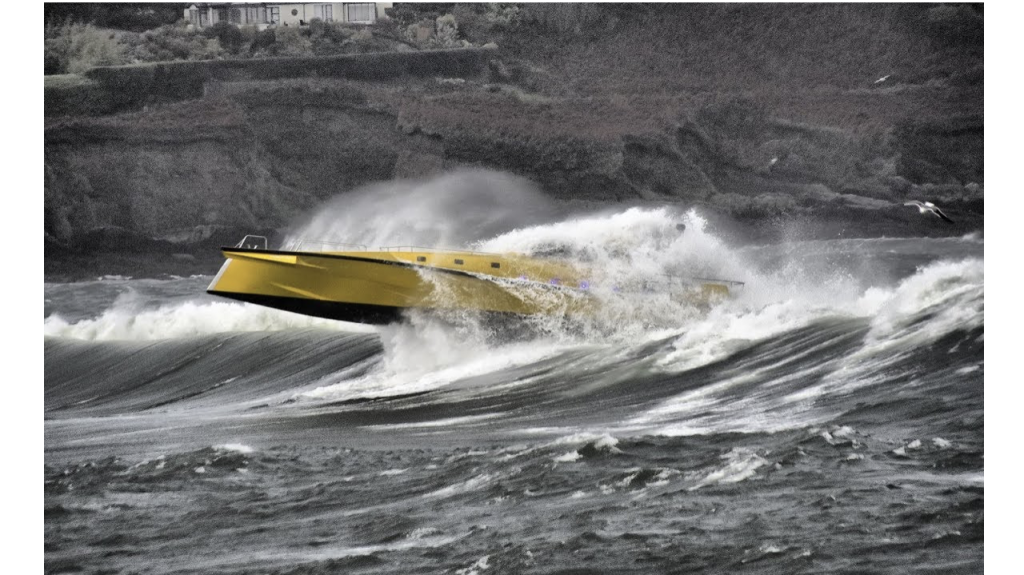
Photo: Thunder Child II
Let’s start from the basics, here is a brief overview of what to keep an eye on:
- mooring equipment,
- access doors and hatches,
- steering system,
- safety equipment,
- navigational equipment,
- electrical systems,
- engine room,
- storage compartments and bilges,
Quickly it can get overwhelming as the yacht size increases, so we decided to share with you our free go-to safety inspection checklist. You can download it bellow.
Now let’s go into a deep dive for each section.
Mooring equipment – in what states are the lines and fenders?
Are the lines showing signs of deterioration, or are the fenders losing air? The lines are one of the primary items to be checked regularly since they are the ones keeping your vessel from hitting the dock or floating away from it.
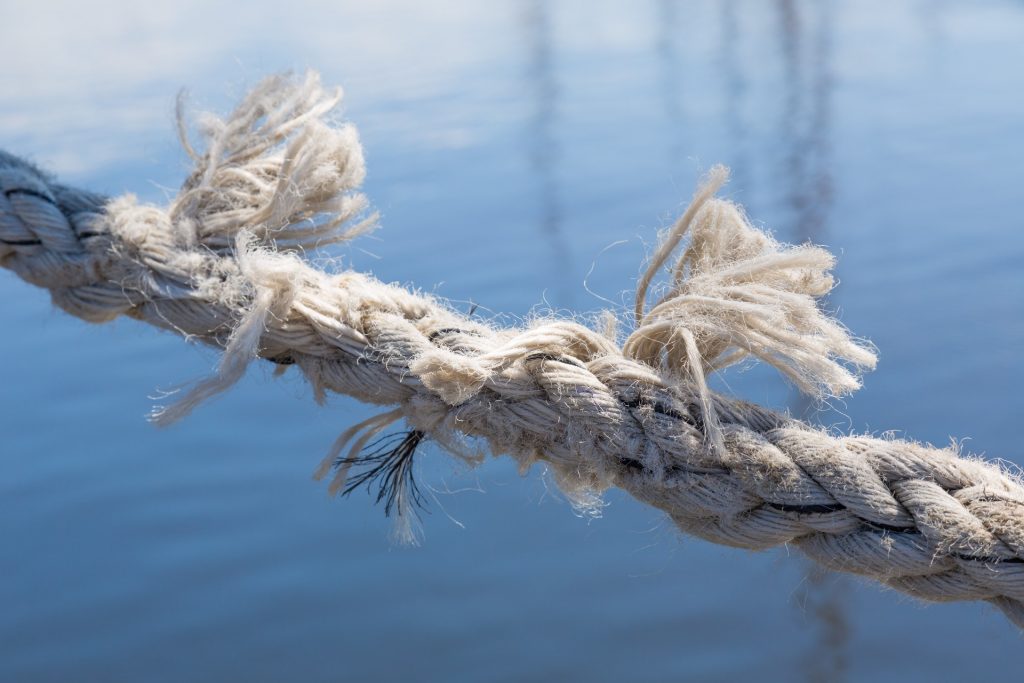
Photo: damaged mooring line
Usually, you would have a minimum of 4 lines for securing the aft part of the yacht with a recommendation of doubling them to a total of 8. Why you ask? Because you can never have enough, either if one snaps you can replace it quickly with another, or in rough weather situations you can double them up for a secure berth.
In some ports, you can have a situation where the ground lines are short and you need to extend them with your lines (temporarily), best practice is to have one long line for this purpose. If you see any damage to the ground lines be sure to notify the Marina staff to inspect them and replace them if necessary.
We recommend during the winter always double up your lines so you can have a piece of mind.
Fenders are the barrier that keeps your yacht safe from damage either from the dock or other yachts, but if they are not inflated properly they will have a hard time doing so. Regularly check the air pressure and add if needed, if you do not have a protective cover for them we recommend buying them because they will protect your fenders from chafing and prematurely failing.
Anchor windlass
Again, one of the critical pieces of equipment onboard. If you don’t want to be lowering and lifting the anchor by hand then it would be smart to take care of your windlass.
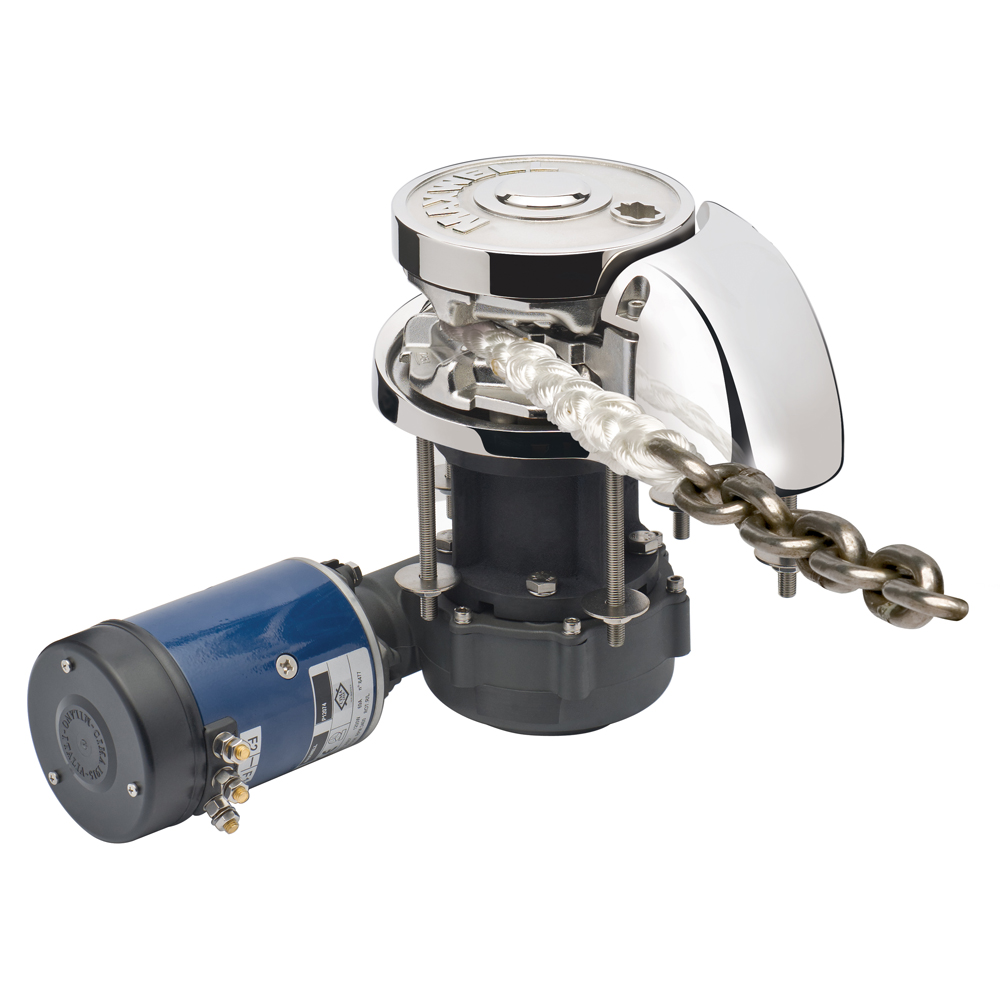
Photo: Maxwell windlass
How to take good care you ask, refer to the manufactures manual, obvious right? Here is a list of common windlasses (click on each for manuals) found onboard yachts and some key maintenance tips:
1. Keep it clean
Regular rinse with fresh water after each operation will keep any debris, mud, or sand out of the moving parts and allow you to notice if anything is out of order.
2. Lubricate
We don’t want any friction between moving parts as it will cause premature failure of the windlass. Check the oil levels regularly and add more if needed.
3. Check the mounting hardware
Are there any bolts loose? Can you spot any leaks from the deck level to the motor compartment, if yes then the bedding seal is broken and needs replacement.
4. Electrical connections
Inspect all electrical connections and make sure they are both secure and free of corrosion. This includes the connections at the windlass motor itself, the solenoid control box, and the foot switches/socket for the handheld devices.
If there are any vibrations while lifting or lowering the anchor, brakes not functioning, or electrical devices not working properly be sure to contact a verified service.
Access doors and hatches
Check all doors and hatches, are there any signs of leaks or broken seals? The last thing you need when going out to sea is a door or hatch leaking water. Any water breach can affect the watertight integrity of the vessel and also cause damage to the interior and any electrical equipment.
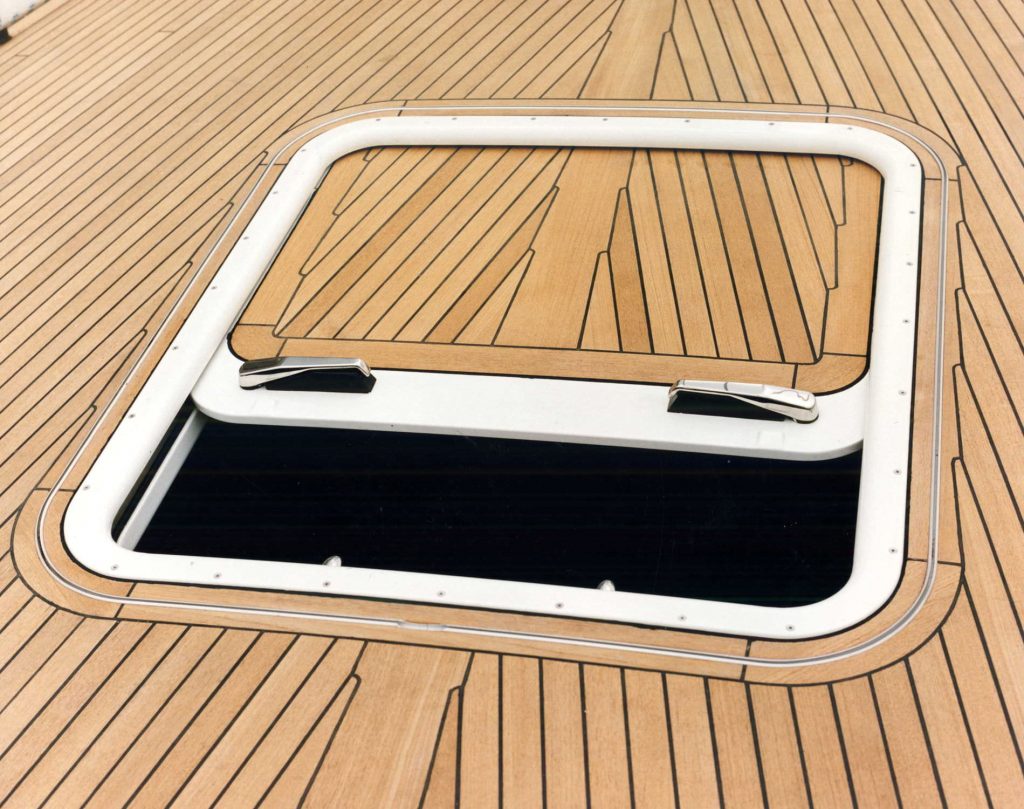
Photo: Deck access hatch
Especially keep an eye on access hatches that lead to any technical compartments, engine room, or garage space.
When possible test the waterproof integrity of each door/hatch, spray lightly with water, and check if any water is going through. If it does, it can be from a broken seal or material crack, make sure to fix it properly before it develops into a bigger problem.
Steering system – don’t lose it
We will be talking about the hydraulic system, and as such you should look for any binding, leaks on the hydraulic hoses, or corrosion on the moving parts of the rudder. If there is any delay in steering it can be a case of air trapped inside of the system, to fix this you need to ”bleed’ the system (the hydraulic oil needs to displace all of the air).
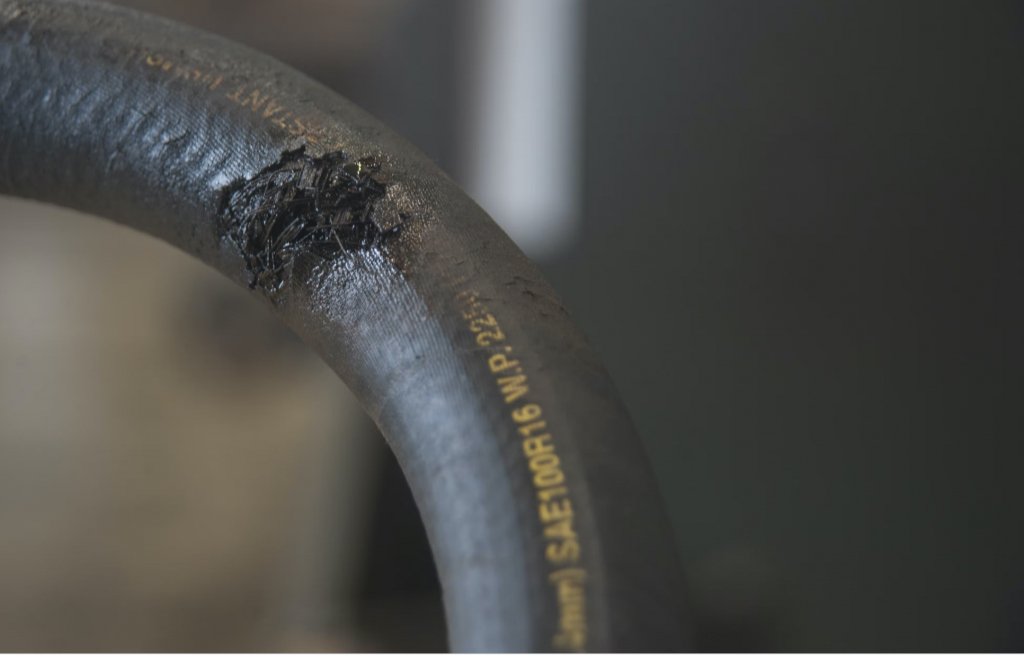
Photo: Hydraulic hose damaged
Be sure to test the function of the steering pumps and operate each independently (if you have 2 onboard). A simple pre-departure test of the helm and rudder responsiveness can prevent disasters from developing.
Larger yachts have emergency steering in place, where manual operation is available if the pumps fail. If this arrangement is not possible on your vessel and you only have one steering pump, we recommend installing a second one for redundancy.
Safety Equipment – know how to use it
We can divide this into 2 categories:
- Life-saving appliances
- Fire safety
Life-saving equipment is everything from life jackets, immersion suits, life rafts, rescue boats, life rings, medical equipment, flares, and rockets to handheld VHFs and EPIRB, don’t worry we included everything in our checklist below.
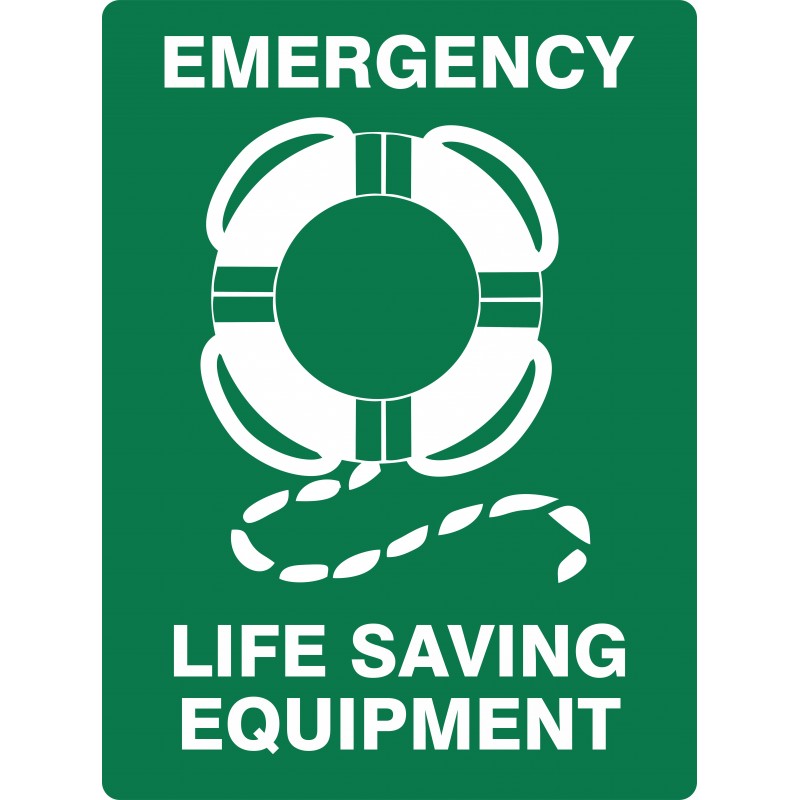
Photo: LSA sign
For lifejackets, you want to inspect the overall condition, is there any damage or mold on the material? Check if each has its dedicated light and whistle, and if are they functioning properly. If you have inflatable-type lifejackets onboard check the expiry date of the CO2 capsule attached. Before heading out to sea instruct all passengers to practice doing the lifejackets and adjust them to their size.
Signaling equipment needs to be checked for date expiry, and emergency communication devices tested before departure. This is a quick and easy process that can mean life or death in an emergency situation, make a habit of doing it before each trip.
Life rafts are inspected annually by professional service but it does not hurt to check on them often. Especially the HRU (hydraulic release unit) and painter line.
One of the common mistakes with HRU is that often it is not properly connected, then a liferaft’s float-free and self-inflation functions will fail.
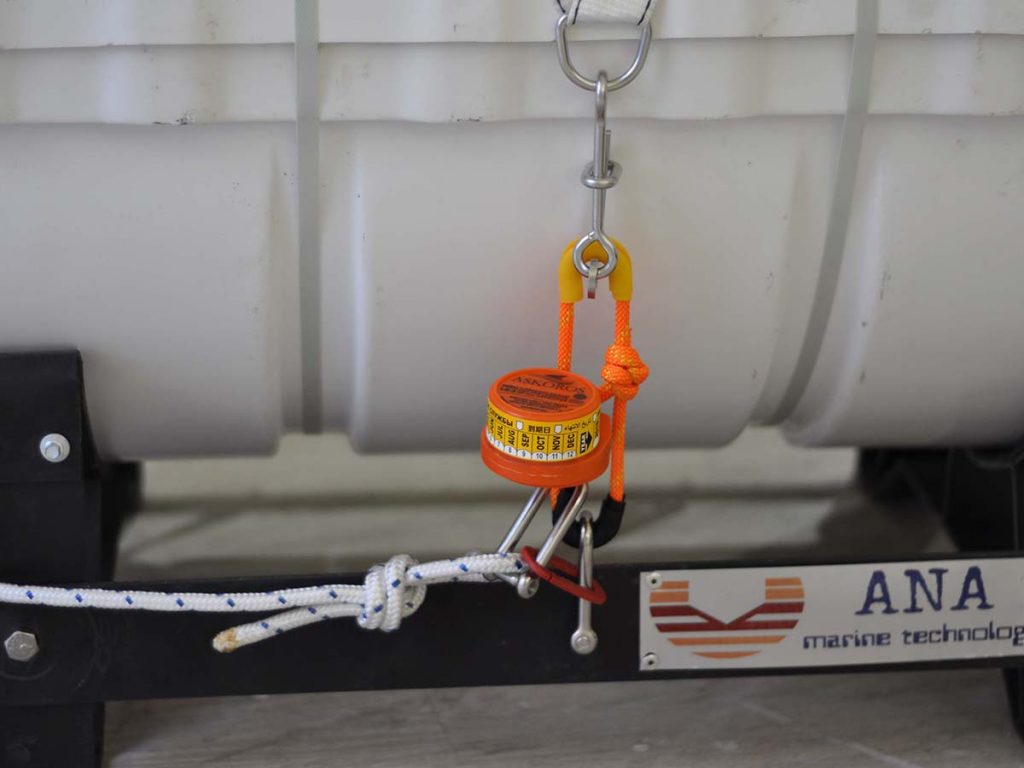
Photo: HRU connected to the liferaft
Medicine onboard needs to be tracked for date expiry, devices such as defibrillators tested and battery status monitored. Make an excel sheet with all items listed and expiry dates noted.
Fire safety
When it comes to fire safety, prevention is key. Since yachts are made for luxury cruising often they lack the fireproof design or equipment, even when everything is done right from the construction side when the fire goes out of control there is little you can do.
What can you do? Make a list of potential fire hazards on board, as yachts are getting more advanced and interconnected the number of batteries, and UPS’s (uninterrupted power supply) grow. Each potentially brings a risk of a fire. Check all fuse boxes and wirings for any signs of damage or unusual heat.
Use a trained marine electrician to install and service electrics.
Do you keep fuel canisters onboard? Only carry spare petrol if necessary and store it in a self-draining locker or on an open deck.
Water toys, where are they stored and how do you charge them? Never leave water toys batteries charging unsupervised.
Keep a list of all of the smoke, heat detectors, fire extinguisher, fire blankets, and hydrants and inspect them regularly. Familiarize yourself with how to use firefighting equipment and do practice drills.
Nav. Equipment all charts up to date?
Navigational equipment is also in the critical equipment category and as such all servicing is recommended to be done by professionals, here are just a few key points to look after – check the gyro and magnetic compass for errors, – perform tests on RADAR for accurate readings, test the ARPA function, – update the ECDIS or any other chart plotter, update the paper charts and Nautical Publications via Notice to Mariners – test the VHF and other communication equipment, – test the AIS and NAVTEX receivers, – comparing the readings from the ECHO sounder with updated charts, – test the GPS receiver, – test the NAV. lights and replace immediately nonfunctioning ones, – test the rudder angle indicator, – test the anemometer, – test the AUTOPILOT is keeping the input heading, Operational tests of shipboard navigational equipment should be carried out at sea as frequently as practicable and recorded accordingly. In our Owner-operator program, we go through all of the functions and tests mentioned here because what is the point of having all of the equipment if you are not confident in using them correctly?
Water toys – Li-on batteries
As we switch more and more to electric systems and propulsion there will be a need for better information and education regarding the safe handling and disposal of faulty Li-on batteries. Lithium-ion batteries are extremely sensitive to high temperatures and inherently flammable. These battery packs tend to degrade much faster than they normally would, due to heat. If a lithium-ion battery pack fails, it will burst into flames and can cause widespread damage.
Maintenance and Handling Precautions
- Monitor battery charge status while charging
- Observe run time with a fully-charged battery
- Ensure batteries self-discharge
- Check batteries before placing them in storage for irregularities in charge status
- Avoid exposing Li-Ion batteries to excessive vibration
- Do not keep batteries in high OR low temperatures
- Always handle batteries with caution
- Do not use damaged batteries
Never store damaged or faulty batteries onboard for a long period, and as soon as practicable dispose of them in a recycling plant or qualified service. If a Li-on battery catches fire, Halon has been used to extinguish the open flame from a battery fire. It does not stop the thermal runaway. The only option to stop this chemical reaction is to cool it or contain it, otherwise, it will continue until every cell in the device has expended itself in virtual explosions. Halon due to its ozone-depleting effect is also a limited resource, as it is no longer being manufactured for that same reason.
Lithium Ion Battery Incident Kit
The Lithium Ion Battery Incident Kit is a recent innovation that modernizes the equipment and procedures to more effectively extinguish and contain suspect and defective Lithium Ion batteries and devices – even those already on fire. It includes:
- Containment/Suppression Bag – Constructed from multiple layers of fire-resistant and insulative textiles. Additional options include filters for a superior level of smoke and fume suppression.
- PED Pad Fire Suppression Pillows – These pillows contain CellBlockEX, an inert DRY mineral agent which has proven to quell fires more effectively than Halon and Water. They are easy to deploy on a fire.
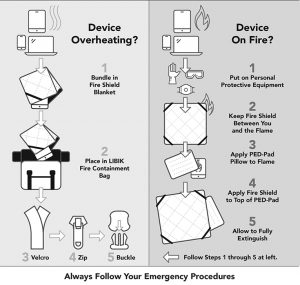
- FireShield Blanket – As its name applies, this protective fire-resistant blanket may be used as a shield when approaching a battery fire or suspect device.
- High Heat Gloves – Provides additional protection when approaching a thermal event.
- Goggles and Mask – Provided for quick and efficient use in certain situations, but are not intended to replace standard-issue PPE if it is available.
Engine room – keep it clean
The heart of the vessel. Often you can see yachts with the immaculate exterior and flashy interiors but once you go down to the engine room you get a sense of how the vessel is maintained.
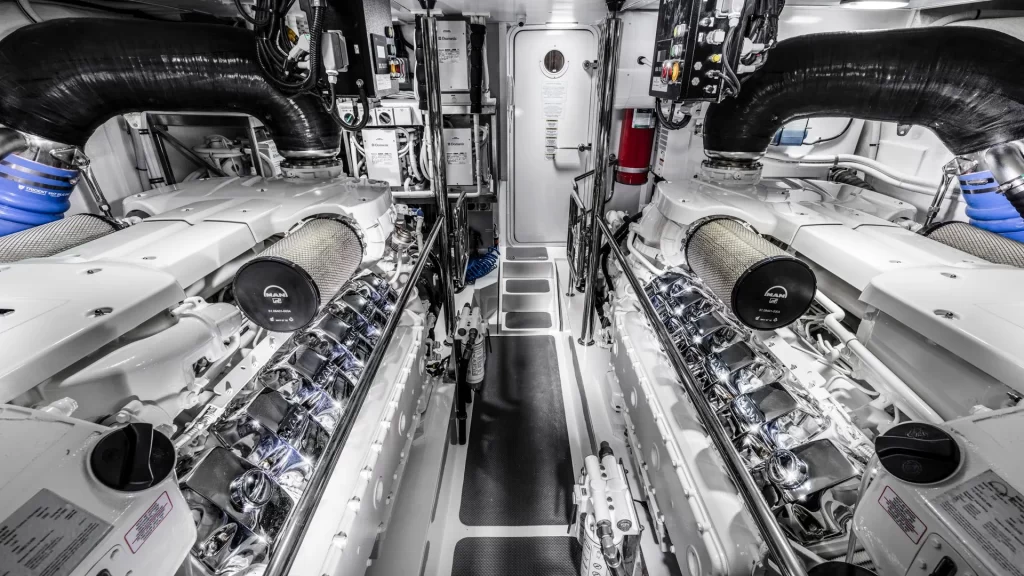
Photo: Superyacht engine room
While servicing the engines, generators, and equipment requires specialized knowledge, the minimum you should do is keep it clean and check for any irregularities.
Key points:
- Follow the maintenance schedule for the main engine, and generators according to the manufacturer’s specifications,
- Keep an eye on the condition of all hoses, joints, and fittings,
- Place combustible materials, rags, packaging, etc. outside of the engine room while underway.
- Store tools in their proprietary storage,
- Routine surface temperature measurements of critical parts of machinery, engine shafts,
- Make sure you have adequate engine room ventilation,
- Check the bilges for any oil leaks or residues. Place oil sorbents under engines or other equipment you suspect to be leaking,
- Visual inspection, make sure you have good lighting so you don’t miss anything,
- Check the sea cocks and valves for any malfunction or rust,
- Clean the sea strainers,
- Keep a maintenance record of all the services and issues that arise,
Treat the engine room as your home, clean and organized.
Conclusion
That was a long read, just note that we only scratched the surface. Hopefully, now you can get a sense of why superyachts need a professional crew to take care of them.
If you currently don’t have a full-time crew onboard and would like to have a piece of mind, check out our Yacht Care Program.
Superyachts are complex with new systems being introduced frequently on board. It would be wise to have checklists in place for convenience and to establish a record of prior inspections. This doesn’t need to be anything complicated, just a list of things to check before each voyage, that way you will not forget anything and have a piece of mind.
To make it easier for you we prepared a basic safety checklist that will apply to all sizes of yachts.
